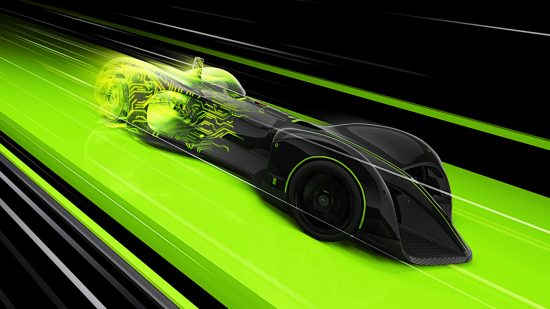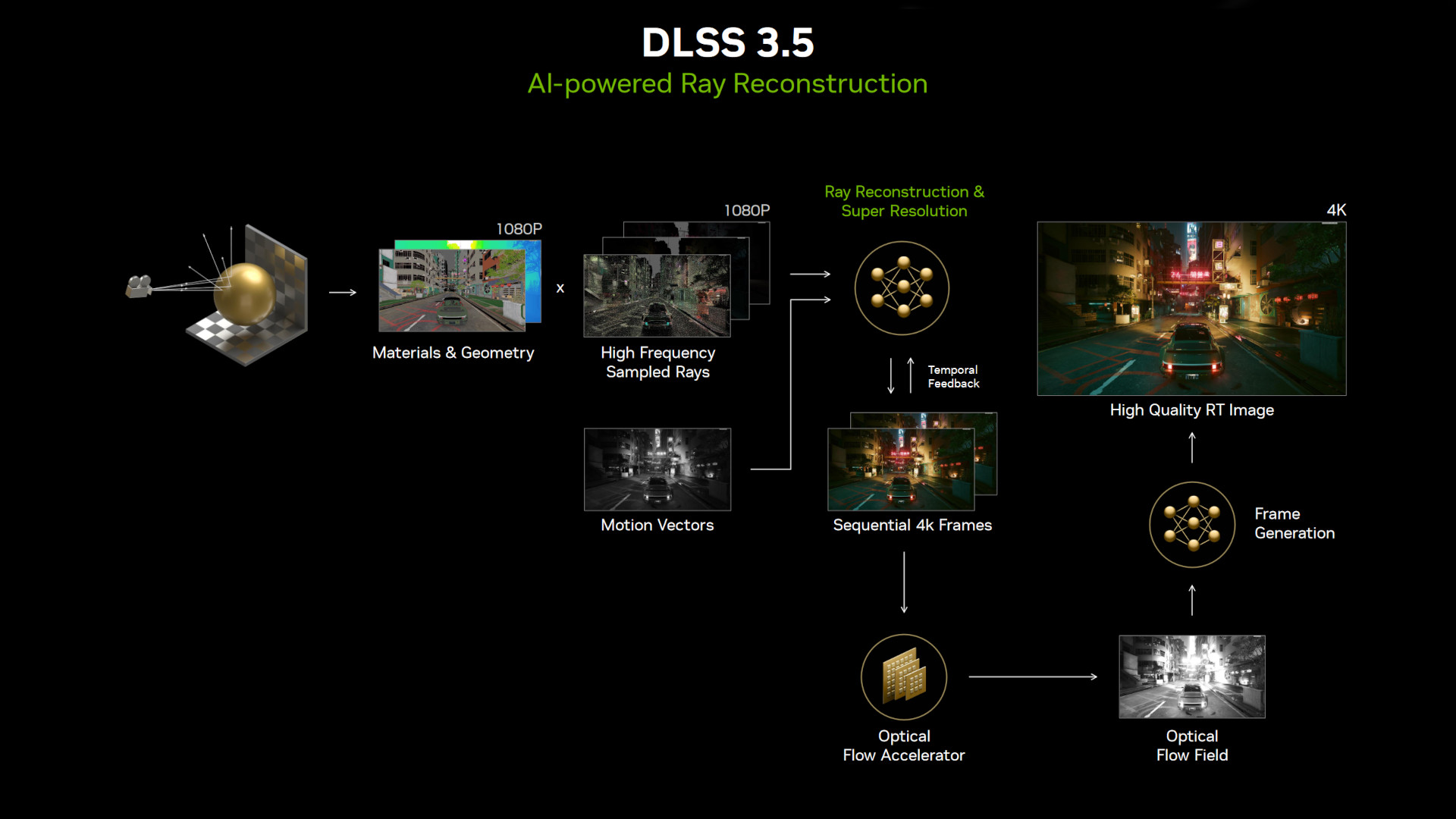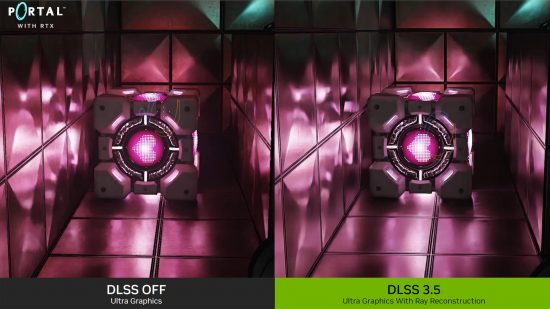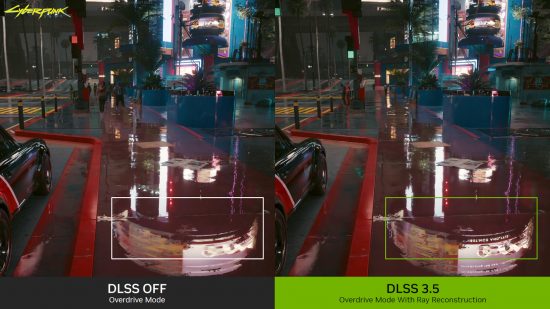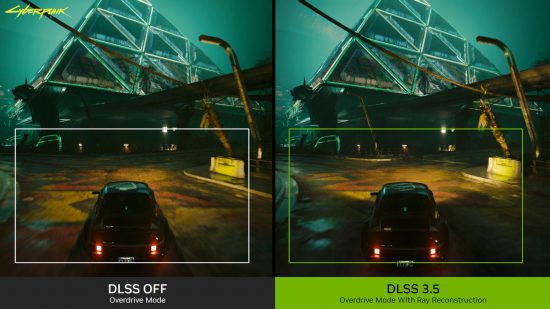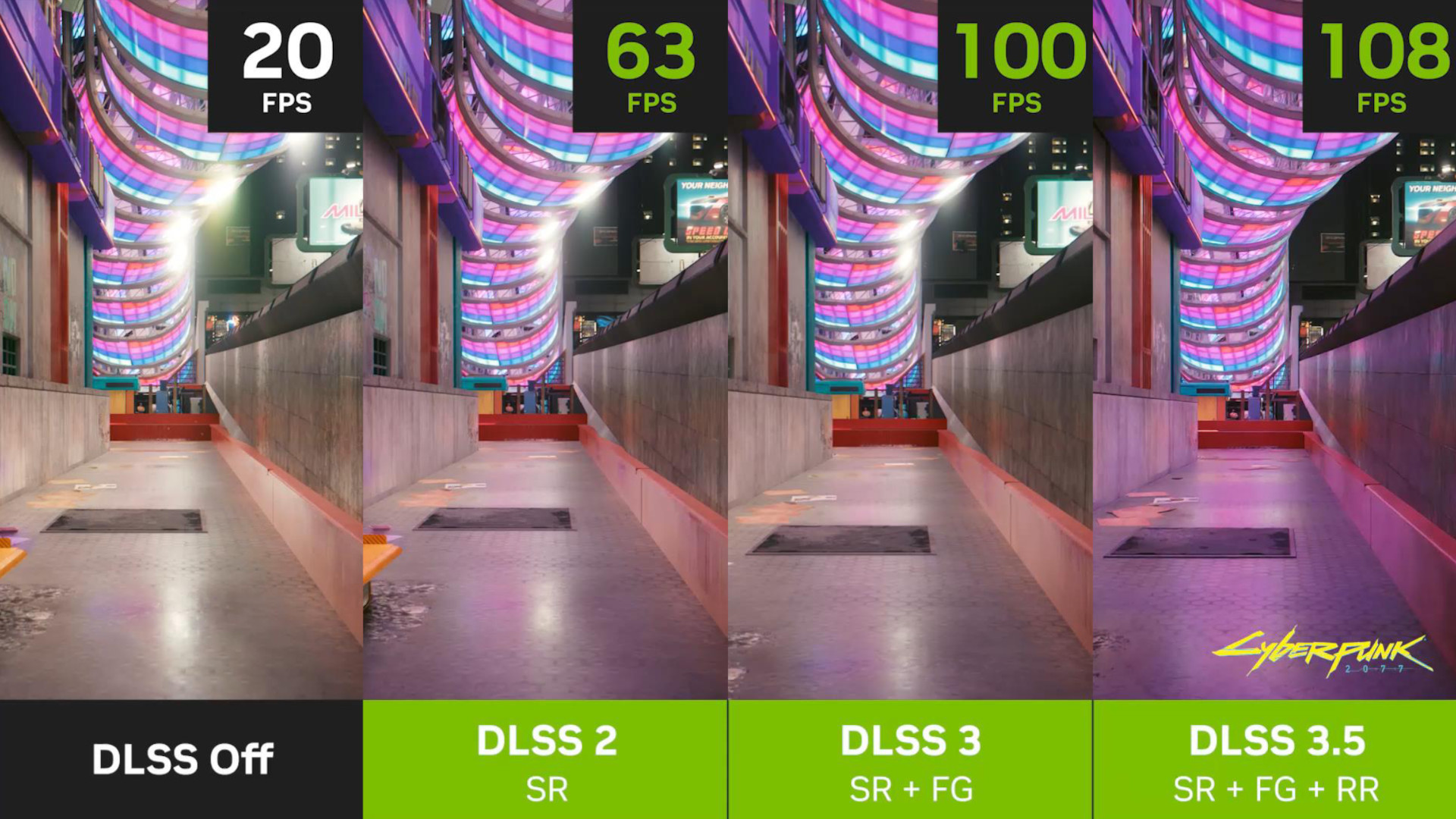Nvidia DLSS is already an invaluable way to improve performance and image quality, particularly when ray tracing is involved. Now, with the advent of ‘Ray Reconstruction’ as part of DLSS 3.5, Nvidia is working to improve ray tracing fidelity and frame rates across its entire GeForce RTX graphics card range.
We’ve not had an update to the Deep Learning Super Sampling software suite since January 2023, with DLSS 3.1, which introduced small but welcome improvements to provide better UI stability and quality. DLSS 3.5, however, looks to be a much more substantial update.
The main goal of Nvidia DLSS 3.5 is to solve the problems that arise from bespoke denoisers by cutting them out altogether and leveraging team green’s machine learning smarts in the form of a new feature called ‘Ray Reconstruction’. If you’ve never heard of a ‘denoiser’ before, don’t worry. In short, its purpose is to resolve raw ray-traced pixels that can often resemble a noisy static mess into the final rendered image we see.
In a briefing with PCGamesN, Nvidia claims that by swapping from hand-tuned denoisers to Ray Reconstruction, gamers will benefit from more accurate, detailed, and less-performant heavy ray-traced effects. While this sounds great in theory, team green has kindly shared screenshots showcasing DLSS 3.5 in action.
Both screenshots from Cybperunk 2077 in the gallery above are inarguably improved thanks to Ray Reconstruction, with reflections retaining more detail and lighting behaving more accurately.
However, I’d like to discuss the Portal with RTX screenshot in more detail. While the changes here are more subtle, they’re hard to ignore once you’re aware of what to look for. Note the pixels that make up the heart of the Companion Cube, which appear fuller thanks to DLSS 3.5. The diffused lighting on the metallic floor and walls also appears sharper and less water-like, resolving the pitfalls of a noisy ray tracing resolve.
Finally, let’s talk about performance. Using Cyberpunk 2077 in its Ray Tracing: Overdrive mode, even the Nvidia GeForce RTX 4090 needs an assist from DLSS to produce playable frame rates. While we already knew that Super Resolution and Frame Generation allow for boosted frame rates, Ray Reconstruction offers yet another bump while also improving image quality.
While it’s unfortunate that Frame Generation remains exclusive to GeForce RTX 40 series graphics cards, we’re happy to see that Ray Reconstruction will benefit every GPU with Tensor cores. That’s everything from an Nvidia GeForce RTX 2060 upwards.

DLSS 3.5 is set to arrive come the Cyberpunk 2077: Phantom Liberty release date, and we’ll be sure to put Nvidia’s claims here to the test around that time. To learn more about Ray Reconstruction, check out the official Nvidia blog here.
In the meantime, check out coverage on other Nvidia Gamescom announcements, including the surprise reveal of Half-Life 2 RTX as well as the lowdown on Nvidia GeForce Now PC Game Pass support.
